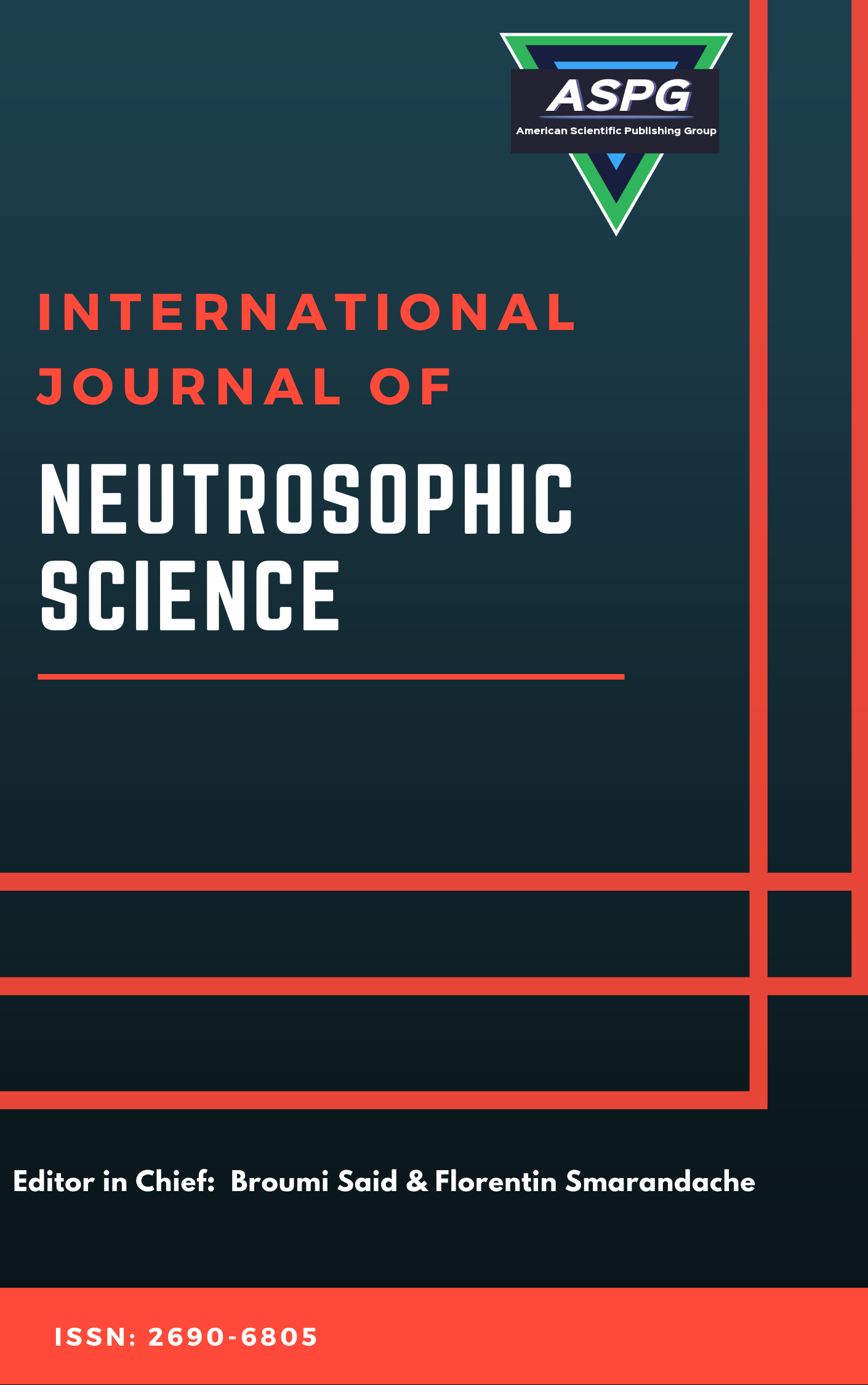

Volume 27 , Issue 1 , PP: 147-165, 2026 | Cite this article as | XML | Html | PDF | Full Length Article
Tanvir Mahmoud Hussein 1 , Priyanka Sharma 2 , Aastha Budhiraja 3 , Anshu Sharma 4 , Tojiyev Rakhmatilla 5 , Sonia Setia 6 *
Doi: https://doi.org/10.54216/IJNS.270114
Personalized learning pathways in digital education platforms have become essential for addressing the unique needs and behaviors of individual learners. However, traditional adaptive systems often fail to account for the uncertainty, ambiguity, and inconsistency inherent in educational data. This paper proposes a novel neutrosophic decision-support framework that models learner profiles using truth (T), indeterminacy (I), and falsity (F) scores derived from student interaction and performance data. Utilizing the Open University Learning Analytics Dataset (OULAD), we compute neutrosophic learner vectors based on assessment outcomes, engagement patterns, and virtual learning environment (VLE) activity. A rule-based decision engine then recommends adaptive learning pathways—ranging from remedial to advanced—by interpreting the T/I/F distributions through a neutrosophic logic framework. Experimental results demonstrate that the proposed model enhances pathway assignment accuracy and provides better support for learners with incomplete or uncertain data compared to traditional fuzzy and crisp models. The neutrosophic approach also ensures interpretability and flexibility, making it well-suited for real-world educational platforms aiming to achieve adaptive learning at scale.
Neutrosophic logic , Adaptive learning , Decision support system , Educational data mining , Uncertainty modeling , OULAD dataset
[1] B. A. Abdelfattah, S. M. Darwish, and S. M. Elkaffas. ”Enhancing the Prediction of Stock Market Movement Using Neutrosophic-Logic-Based Sentiment Analysis.” Journal of Theoretical and Applied Electronic Commerce Research, vol. 19, no. 1, 2024. DOI: https://doi.org/10.3390/jtaer19010007
[2] N. M. Alnaqbi and W. Fouda. ”Neutrosophic Cognitive Maps for Adaptive Learning Systems in STEM Education.” IEEE Transactions on Learning Technologies, vol. 15, no. 4, 2022. DOI: https://doi. org/10.1109/TLT.2022.3194738
[3] K. Bedair, A. I. Taloba, and N. Omer. ”Neutrosophic-Enhanced Deep Learning for Early Diagnosis of Spinal Degenerative Disorders via Medical Imaging.” Computers in Biology and Medicine, vol. 153, 2023. DOI: https://doi.org/10.1016/j.compbiomed.2022.106531
[4] N. S. Fayed, M. Abu-Elkheir, E. M. El-Daydamony, and A. Atwan. ”Sensor-Based Occupancy Detection Using Neutrosophic Features Fusion.” Heliyon, vol. 5, no. 9, 2019. DOI: https://doi.org/10. 1016/j.heliyon.2019.e02450
[5] D. K. Kadali, R. N. V. Jagan Mohan, and M. C. Naik. ”Enhancing Crime Cluster Reliability Using Neutrosophic Logic and a Three-Stage Model.” Journal of Engineering Science and Technology Review, vol. 16, no. 4, 2023. DOI: https://doi.org/10.25103/jestr.164.05
[6] U. Rivieccio. ”Neutrosophic Logics: Prospects and Problems.” Fuzzy Sets and Systems, vol. 159, no. 14, 2008. DOI: https://doi.org/10.1016/j.fss.2007.11.011
[7] M. Saeed, M. U. Nisa, M. H. Saeed, T. Alballa, and H. A. E. W. Khalifa. ”Detecting Patterns of Infection- Induced Fertility Using Fermatean Neutrosophic Set With Similarity Analysis.” IEEE Access, vol. 11, 2023. DOI: https://doi.org/10.1109/ACCESS.2023.3323024
[8] E. Sert and D. Avci. ”Brain Tumor Segmentation Using Neutrosophic Expert Maximum Fuzzy-Sure Entropy and Other Approaches.” Biomedical Signal Processing and Control, vol. 47, 2019. DOI: https://doi.org/10.1016/j.bspc.2018.08.025
[9] S. Sulaymanov. ”Neutrosophic Data Envelopment Analysis for Banking Efficiency under Economic Uncertainty.” Annals of Operations Research, vol. 321, no. 1-2, 2023, pp. 423–447.DOI: https: //doi.org/10.1007/s10479-022-04936-5
[10] A. Abdulaziz, M. Eid, and A. Abduvali. ”Evaluating Digital Transformation in Emerging Economies: A Neutrosophic AHP-TOPSIS Framework.” Technological Forecasting and Social Change”, vol. 182, 2022. DOI: https://doi.org/10.1016/j.techfore.2022.121818
[11] A. Usmanova. ”Neutrosophic ARIMA Modeling for Inflation Forecasting in Transition Economies.” Economic Modelling, vol. 114, 2022. DOI: https://doi.org/10.1016/j.econmod.2022. 105919.